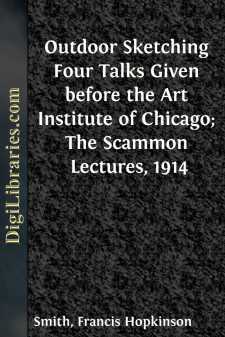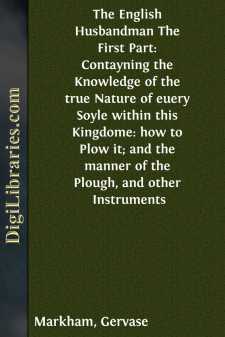Gardening
- Flowers 2
- Fruit 2
- General 8
- Landscape 3
- Vegetables 2
Gardening Books
Sort by:
INTRODUCTORY LETTER MY DEAR MR. FIELDS,—I did promise to write an Introduction to these charming papers but an Introduction,—what is it?—a sort of pilaster, put upon the face of a building for looks' sake, and usually flat,—very flat. Sometimes it may be called a caryatid, which is, as I understand it, a cruel device of architecture, representing a man or a woman, obliged to hold up upon...
more...
INTRODUCTION The successful garden has a permanent basis. There must be some flowers that appear year after year, whose position is fixed and whose appearance can be counted on. The group classed as perennials occupies this position and about flowers of this class is arranged all the various array of annuals and bulbs. These last act as reinforcements in rounding out the garden scheme. Perennials are...
more...
MY OWN ACRE A lifelong habit of story-telling has much to do with the production of these pages. All the more does it move me because it has always included, as perhaps it does in most story-tellers, a keen preference for true stories, stories of actual occurrence. A flower-garden trying to be beautiful is a charming instance of something which a storyteller can otherwise only dream of. For such a...
more...
I THE WAYS OF THE WIND "Out of the veins of the world comes the blood of me;The heart that beats in my side is the heart of the sea;The hills have known me of old, and they do not forget;Long ago was I friends with the wind; I am friends with it yet."—Gerald Gould." Whenever a piece of the land is to be set apart for a garden, two mighty rulers must be consulted as to the boundaries. When...
more...
COMPOSITION My chief reason for confining these four talks to the outdoor sketch is because I have been an outdoor painter since I was sixteen years of age; have never in my whole life painted what is known as a studio picture evolved from memory or from my inner consciousness, or from any one of my outdoor sketches. My pictures are begun and finished often at one sitting, never more than three...
more...
by:
Samuel Felton
PREFACE. The following pages apply only to those English writers on gardening who are deceased. That there have been portraits taken of some of those sixty-nine English writers, whose names first occur in the following pages, there can be no doubt; and those portraits may yet be with their surviving relatives or descendants. I am not so presumptuous as to apply to the following most slight memorials,...
more...
by:
Gervase Markham
The Epistle to the generall andgentle Reader. Although (generall reader) the nature of this worst part of this last age hath conuerted all things to such vildnesse that whatsoeuer is truely good is now esteemed most vitious, learning being derided, fortitude drawne into so many definitions that it consisteth in meere words onely, and although nothing is happy or prosperous, but meere fashion &...
more...








